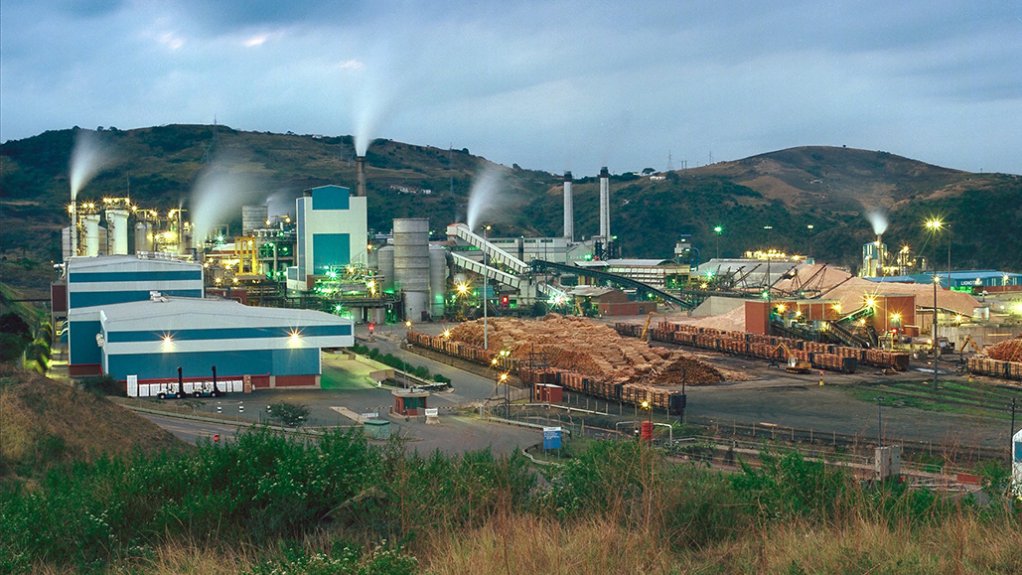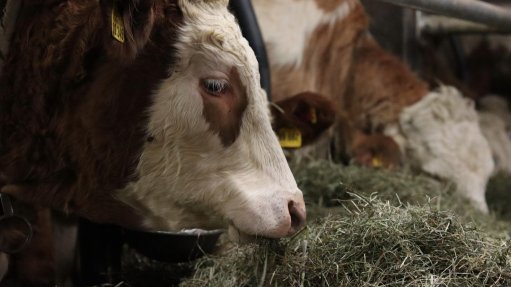Tight global paper markets give Sappi a boost
Pulp and paper company Sappi recorded a strong performance in the quarter ended March 31 – the second quarter of its 2022 financial year.
It was able to weather headwinds to improve earnings before interest, taxes, depreciation and amortisation (Ebitda) by 201% year-on-year and by 40% quarter-on-quarter to $337-million.
Moreover, net debt was reduced to $1.79-billion, from $2.07-billion as at March 31, 2021.
Earnings a share, excluding special items, was $0.35, a further improvement on the $0.20 reported for the first quarter, providing further evidence of the steadily improving profitability of the group, CEO Steve Binnie outlined in a market release on May 12.
Profit for the quarter under review was $188-million.
“I am very proud of the excellent performance during the quarter, particularly in light of the impact of Covid-19 in the last two years and the global economic turmoil.
“Tight global paper markets were the principal factor behind the quarter’s success and enabled the implementation of higher selling prices, which offset extraordinary cost inflation.
“The Russian-Ukrainian conflict triggered renewed volatility in global commodity markets and further disrupted already constrained global supply chains, which intensified cost inflation across all regions and all product segments,” Binnie explained.
He added that, owing to the favourable operating environment, the group was in a strong position to maintain the recent momentum and the underlying Ebitda for the third quarter should be consistent with that of the second quarter, subject to the impacts of the yearly maintenance shuts.
“Global logistical challenges continued unabated and posed headwinds for our export sales and raw material procurement in all regions [during the second quarter]. Substantial energy, raw material and delivery cost inflation in the quarter was offset by selling price increases in the paper business,” Binnie highlighted.
Sales volumes in the pulp segment increased by 9% year-on-year on the back of robust demand and improved logistics in South Africa.Rising global paper pulp prices, driven by supply constraints owing to unplanned production downtime, provided further support for both dissolving pulp (DP) and bleached thermomechanical pricing.
DP production volumes for the quarter were about 57 000 t below expectation at the Saiccor mill, in KwaZulu-Natal, owing to unplanned utility Eskom power outages, raw material supply disruptions and operational challenges that severely disrupted the mill’s stability.
However, the equipment related to the Saiccor mill expansion project performed in line with expectations.
Packaging and speciality papers sales volumes grew by 13% year-on-year, driven by robust global demand and renewed volume growth in Europe.
Successful selling price increases and mix improvement offset rising costs and aided margin expansion for the segment. However, periodic contractual commitments deferred some increases in selling prices, particularly in Europe, that are required to restore margins to normalised levels.
A significant recovery in graphic paper demand, combined with a reduction in supply, ongoing logistical challenges and a prolonged labour strike at Finnish paper mills led to an unprecedented global shortage of graphic paper, Sappi pointed out.
Sales volumes for the segment increased by 12% year-on-year and the tight market dynamics allowed all assets to run at full operating rates during the quarter.
Successful implementation of a series of selling price increases and energy and freight surcharges offset significantly higher costs and facilitated margin restoration for the segment.
A highlight for the quarter was the turnaround of the European business, which achieved a strong second-quarter Ebitda of €124-million. The success was despite geopolitical uncertainty and significant input cost inflation.
The North American business delivered another strong quarter with Ebitda of $114-million. Tight markets and significantly higher year-on-year selling prices across all product segments contributed to this achievement.
However, cost inflation and ongoing logistical supply chain challenges remained as noteworthy headwinds for the business.
The South African business was impacted by significant cost increases, lower net selling prices for DP and production challenges at the Saiccor mill.
Year-on-year variable costs increased by 23% owing to inflation across all categories.
Expanding fruit export markets and constrained paper imports into South Africa contributed to healthy market dynamics for packaging paper. Customer demand exceeded supply for all paper categories.
OUTLOOK
Markets across all of Sappi’s key product segments remain encouraging and selling prices continued to rise in April, the company noted.
Continuing tight graphic paper markets provide an opportunity to maintain profitability in Europe and North America.
Additionally, the demand in the packaging and specialities segment remains robust, it said.
DP market indicators remain positive despite operating curtailments in April within the textile value chain in China owing to another wave of Covid infections.
The differential between cotton and viscose staple fibre prices continues to be elevated, which should support DP pricing.
Subsequent to quarter-end, the market price for hardwood DP increased sharply to $1 100 /t.
The benefit of the improved DP pricing would be realised in the fourth quarter owing to the lag in certain contractual pricing, Sappi explained.
DP sales volumes in the third quarter would be lower than the second quarter owing to scheduled yearly maintenance shuts at the Cloquet, Ngodwana and Saiccor mills, which will have an estimated $50-million impact on profitability.
In early April, heavy rainfall and extreme storms in KwaZulu-Natal led to widespread flooding and destruction of infrastructure. The Saiccor, Tugela and Stanger mills, as well as the export warehouse facilities at the Durban port, were impacted and production was temporarily halted.
There was no material damage to any of the plants and mill operations resumed from April 21. Although the Port of Durban officially resumed operations, export deliveries could be negatively impacted for some time owing to damage to access roads, congestion and limited availability of vessel space.
Sappi estimates that there will be no material impact on Ebitda for the year. However, after external insurance proceeds, the estimated net loss of about $28-million will be reflected as a special item expense in the third quarter.
An inflationary macroeconomic environment continues to exert pressures on the company’s cost base across all regions.
Moreover, geopolitical volatility within Europe poses a risk to energy and natural gas supplies in the region. Therefore, Sappi anticipates delivery, chemicals and energy costs to increase further in the third quarter.
To counteract the cost inflation, Sappi says it will continue to focus on improved operating efficiencies, price and mix management.
As previously disclosed, capital expenditure is estimated to be $395-million for the full-year.
Article Enquiry
Email Article
Save Article
Feedback
To advertise email advertising@creamermedia.co.za or click here
Comments
Press Office
Announcements
What's On
Subscribe to improve your user experience...
Option 1 (equivalent of R125 a month):
Receive a weekly copy of Creamer Media's Engineering News & Mining Weekly magazine
(print copy for those in South Africa and e-magazine for those outside of South Africa)
Receive daily email newsletters
Access to full search results
Access archive of magazine back copies
Access to Projects in Progress
Access to ONE Research Report of your choice in PDF format
Option 2 (equivalent of R375 a month):
All benefits from Option 1
PLUS
Access to Creamer Media's Research Channel Africa for ALL Research Reports, in PDF format, on various industrial and mining sectors
including Electricity; Water; Energy Transition; Hydrogen; Roads, Rail and Ports; Coal; Gold; Platinum; Battery Metals; etc.
Already a subscriber?
Forgotten your password?
Receive weekly copy of Creamer Media's Engineering News & Mining Weekly magazine (print copy for those in South Africa and e-magazine for those outside of South Africa)
➕
Recieve daily email newsletters
➕
Access to full search results
➕
Access archive of magazine back copies
➕
Access to Projects in Progress
➕
Access to ONE Research Report of your choice in PDF format
RESEARCH CHANNEL AFRICA
R4500 (equivalent of R375 a month)
SUBSCRIBEAll benefits from Option 1
➕
Access to Creamer Media's Research Channel Africa for ALL Research Reports on various industrial and mining sectors, in PDF format, including on:
Electricity
➕
Water
➕
Energy Transition
➕
Hydrogen
➕
Roads, Rail and Ports
➕
Coal
➕
Gold
➕
Platinum
➕
Battery Metals
➕
etc.
Receive all benefits from Option 1 or Option 2 delivered to numerous people at your company
➕
Multiple User names and Passwords for simultaneous log-ins
➕
Intranet integration access to all in your organisation




















